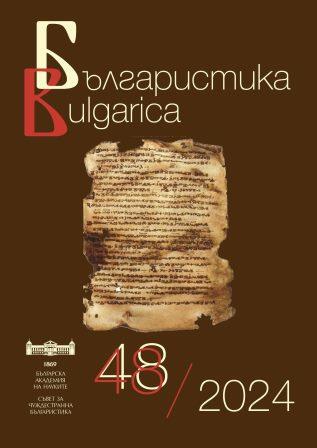
Jugoslawien - An Veselin Đuranović - Präsident des Staatspräsidiums der SFRJ
Open letter from Vladimir Mijanović to Veselin Đuranović
More...We kindly inform you that, as long as the subject affiliation of our 300.000+ articles is in progress, you might get unsufficient or no results on your third level or second level search. In this case, please broaden your search criteria.

Open letter from Vladimir Mijanović to Veselin Đuranović
More...
There is no archival record connecting the zawiya founded by Gazi Isa Bey in Sarajevo (1462) to a dervish order (tariqat) till the end of the 18th century. Then, suddenly, with the appearance of Sheikh Osman Dede, Isa Bey’s zawiya began to be mentioned alongside the Mevlevi tariqat. This change took place when Sheikh Osman Dede, one of the dervishes of the Hacı Sinan Kadirî tekke in Sarajevo, became the sheikh of the Hacı Mahmud Mevlevi tekke and claimed that it was actually Isa Bey’s zawiya. At first, he convinced the authorities that the two lodges were one and the same, and even repaired the Mevlevi tekke with the income of the waqf of Isa Bey’s zawiya. He then further claimed that the waqf’s tawliyat (the right to manage the waqf) belonged to the sheikhs of the zawiya based on the waqf’ regulations, and took over the tawliyat of the waqf and appropriated the waqf’s property. Thus, a tawliyat lawsuit that would last for many years arose between the trustee of the zawiya foundation represented by Osman bin Mustafa residing in Skopje, from the lineage of İsa bey, and the new trustee of the foundation represented by Sheikh Osman Dede. The documents presented in this case reveal that certain aspects such as whether or not Isa Bey’s zawiya is really Mevlevi, which side has the right to the tawliyat of the zawiya’s waqf, and the conditions of endowment in the foundation charter (waqfiya) etc., have been questioned. Various types of documents found in the Ottoman Archive (Ottoman Archive of the Presidency of the Government - BOA) and in the Archives of the General Directorate of Waqfs in Ankara that shed light on the claims and events related to Isa Bey’s zawiya and its waqf starting from the time Sheikh Osman Dede became a Mevlevi sheikh, constituting the first part of this study, have already been published under the title “Several Documents About Isa Bey’s Tekke in Sarajevo (I)”. In this study, the documents from the Sarajevo court registers (sharia sijjils) held at Gazi Husrev’s Bey Library in Sarajevo, will be discussed. In a way, this study implements the documents already discussed in the earlier publication. These new documents that question the generally ac-cepted claim that Isa Bey founded the zawiya as a Mevlevi and reveal the name of Haci Mahmud as the founder of the Mevlevi tekke are of extreme importance and may completely alter the history of the tariqats in Sarajevo all together. These documents are also of great importance not only for the research of the waqf institutions, but also for the research of legal history through the prism of the institution of the qadi and the functioning of the court.
More...








This article examines the case of a Jewish girl named Maria who wanted to convert to Christianity in the town of Kolín, Bohemia, in the year 1666. The author analyzes the sources that document the events and the reactions of the Jewish and Christian communities, as well as the role of the Archbishop and the Capuchins. The article also explores the motives and influences that shaped Maria's decision and her subsequent vacillation between the two faiths. The author argues that the case reflects the atmosphere of messianic expectations and the repercussions of Shabbatai Zevi's appearance in the Jewish world.
More...
The paper analyses the Hebrew chronicle “Milhama be-shalom“ describing the Swedish siege of Prague at the very end of the Thirty Years’ War, in July—October 1648. First the main sources concerning the event are mentioned, then attention is paid to the author of the chronicle, Yehuda Leb ben Yoshua of Prague, and the ways of his treating the subject are discussed. The end of the paper evaluates the chronicle as a source of historical information. There is also an Appendix of extracts from the chronicle translated into English.
More...





Niedługo po XX Zjeździe KPZR nastąpiły zmiany destalinizacyjne we wszystkich państwach „bloku socjalistycznego”. Biblioteki publiczne okaleczone akcjami oczyszczania księgozbiorów z dzieł podlegających natychmiastowemu usunięciu na próżno upominały się o ich zwrot w Centralnym Zarządzie Bibliotek Ministerstwa Kultury i Sztuki (pisma nr 1–4). Na początku 1958 roku bibliotekarzom rozesłano Wskazówki w sprawie postępowania z drukami zbędnymi (pismo nr 5), zabraniające pozbywania się podstawowych dzieł Marksa, Engelsa, Lenina i Stalina. Bibliotekarzy ponownie starano się wykorzystać w propagandowej grze prowadzonej przez ideologów Polski Ludowej ze społeczeństwem.
More...
The article provides a comprehensive bibliography of Jewish associations in Prague, focusing on their publication activities in the 19th century and occasionally the late 18th century. It aims to continue the work of previous compilations, particularly Dr. Otto Muneles' "Bibliographical Survey of Jewish Prague," which documented Hebraica and Judaica from 1512-1951. The bibliography lists statutes, annual reports, jubilee collections, address books, and lectures published by these associations, excluding Zionist and Czech-Jewish organizations, which are to be covered separately. The primary source for this compilation was the extensive collection of the Jewish Museum in Prague's library, especially the pamphlet collection of the former Prague Jewish Religious Community's library. Many publications were lost during WWII when the library was confiscated and relocated multiple times, leading to gaps and losses in the bibliography. Where original prints were unavailable, the bibliography relied on secondary sources, including the handwritten catalog of the former library and heuristics in the Jewish Museum's library and older collections of the National Library of the Czech Republic. The bibliography includes books, yearbooks, almanacs, and works reproduced by other techniques, excluding periodicals and manuscripts.
More...